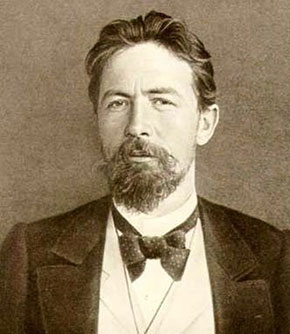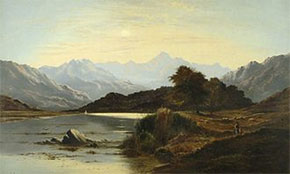THE TRIUMPH OF BEAUTY
KEVIN STROM
“YOU HAVE lost your reason and taken the wrong path. You have taken lies for truth, and hideousness for beauty…. I don’t want to understand you.”
So said the Russian playwright Anton Chekhov more than a century ago. His statement applies even more to our age than his.
The inhuman concrete and glass rectangles that pass for architecture today are hideous - uglier than rat-mazes. They do to the spirit of European man what a cage does to a timber wolf. There was a time when our best homes and public buildings expressed something about our souls. Though in dollar terms we were much poorer then, time and effort were spent and infinite care was taken so that our culture and our spirit shone through in every stone, every cornice, every column, every window. There was a time when beauty lived.
Frank Harris said “Admiration of beauty is the highest impulse in our humanity.”
What have we done with this highest impulse today? Today we take the beauty of the human body, what ought to be the greatest and holiest thing to us, and use and abuse it to create distorted, degrading images on a thousand pages of crude, disgusting, and hideous pornography, ruining countless lives in the process.
“Admiration of beauty is the highest impulse in our humanity.”
What do we now teach our young people to admire? We give awards to a homosexual female to reward her for her perversion and her spreading of that perversion to others. We shower honors upon a man who cut off his genitals and dresses his mutilated body in women’s clothes and falsely declares that he is a woman. This is not admiration of beauty. This is not the highest impulse in our humanity. This is diseased, Jew-induced worship of all that is sick, deformed, twisted, and hideous.
Thoreau thought that beauty was perceived by the higher, more morally evolved type of human being, and not by the lower, saying: “The perception of beauty is a moral test.”
Nietzsche told us that “The voice of beauty speaks softly; it creeps only into the most fully awakened souls.”
The great mathematician Henri Poincaré saw a direct link between the perception of beauty and the pursuit of scientific truth. He said:
“The scientist does not study Nature because it is useful; he studies it because he delights in it, and he delights in it because it is beautiful. If Nature were not beautiful, it would not be worth knowing, and if Nature were not worth knowing, life would not be worth living.”
The inventor and futurist Buckminster Fuller, too, saw beauty in the inherent structure of the universe that was revealed in solving science and engineering problems. He said “If the solution is not beautiful, I know it is wrong.”
Emerson perceived that the ideals of beauty are within us, saying:
“Though we travel the world over to find the beautiful, we must carry it with us, or we find it not.”
Nowhere is the war on beauty more evident than in the field of art.
One function of art is to actualize our inner picture of the beautiful and so to lend reality to the ideal picture of what we can become. In artworks representing the indigenous gods and goddesses of Europe, such as the Pythian Apollo, we find the expression of this idealism again and again. “Modern art,” heavily influenced by Jews, media power, and commercialism, even when it represents the human form, must include non-Whites or blur racial distinctions — and is thus prevented from expressing our true ideals.
There is a very revealing four-part video series, viewable on nationalvanguard.org, by the painter Scott Burdick. In it, he shows us, through his own personal experience and investigations, what it is that makes “modern art” so empty and hideous. It has little to do with all the puffed-up “intellectual” theories put out by largely-Jewish art critics. It has everything to do with what Jews hate. What Jews hate is beauty.
The rising Classical Art Underground that Burdick depicts is Whiter than rural New Hampshire. He masterfully skewers the modern art establishment and their hatred for beauty — and their banishment of it from their galleries, museums, and literature. With calm logic he analyzes the characteristics of the works that are sought out by these culture-distorters, and those that they reject.
What’s their real basis for praising or rejecting a work of art? It isn’t abstract versus representational art — it isn’t nudity, or the human form, or its absence — it isn’t fine-grained materials versus rough materials; Burdick shows us that none of these determine what is accepted and what is rejected.
In the “intellectual” theories (with Frankfurt School roots, though Burdick doesn’t say so) that must be internalized by anyone wishing to rise in the art world today, it is beauty itself that must be rejected and ugliness or nothingness which must be praised.
“Modern artists” produce ugly garbage because in their hearts they hate us and all we call beautiful.
Our perception of beauty guides our choice of a mate, and so shapes the future of the race. A man or woman with a high forehead looks better to us than a man or woman with a sloping forehead, which we instinctively view as primitive and ugly. A protruding jaw or an underdeveloped chin and outsized nose are bars to beauty as we perceive it. We may not be conscious of the reason, but our instincts are telling us that the highly-evolved is beautiful and the primitive-looking is not. We instinctively admire the advanced traits and shrink back from the primitive….
Insofar as those ideals are favored in our selection of who will be the mothers and fathers of generations to come, they will indeed be a glimpse of those unborn generations, a glimpse of what will be, a glimpse of the future.
Every now and then one encounters something incongruously beautiful in the middle of the jungle that America has become. A wildflower growing from a crack in a filthy sidewalk next to a junkie’s discarded needle. A forgotten painting of surpassing beauty, languishing in a dusty second-hand store. A mother and child like something out of Botticelli, walking amid the gibbering masses on the streets of my city.
Marcus Parker said “When asked if I am a ‘White supremacist,’ I answer ‘No, I am a beauty supremacist.'” I care about the aesthetic beauty of our kind. I care about what our kind can become. I care about our unique ability to imagine greater things than have ever been done before — and then do them. To imagine more beautiful things than have ever been seen before — and then create them.
For me, the beauty that I see in the faces and art and hear in the music and words of my own people is the motivation for my life’s work. All I hold dear would be destroyed if we mixed our European blood with that of other races. We have evolved into something special that must not be lost, and I believe we have a destiny to fulfill.
Goethe said: “Beauty is a manifestation of secret natural laws, which otherwise would have been hidden from us forever.” This is the truth which our enemies wish to conceal: When art or love or inspiration or dreams reveal beauty to us, we are glimpsing the ideal world that our race can build if we believe in it with all our souls and fight for it with all our strength. In those moments when beauty strikes us, we are perceiving a more highly evolved future. We are perceiving God.
Dante told us “Beauty awakens the soul to act.” I believe that to be true. That is why I believe that we will win. The anti-cultural ugliness of the modern, Jewish world cannot stand. It is unnatural to us. Once we show our people the alternative — a world of greatness and beauty — something deep in their souls and more inspiring, powerful, and Godlike than anything they have felt before, will unleash a righteous whirlwind upon this Earth, and then the triumph of beauty will be near.
* * *

Prelude to The Afternoon of a Faun
www.youtube.com/watch?v=2Bm85I34-7U
www.youtube.com/watch?v=cg5r7Xi5RpM

Charles Leslie, 1879
(click to enlarge)

